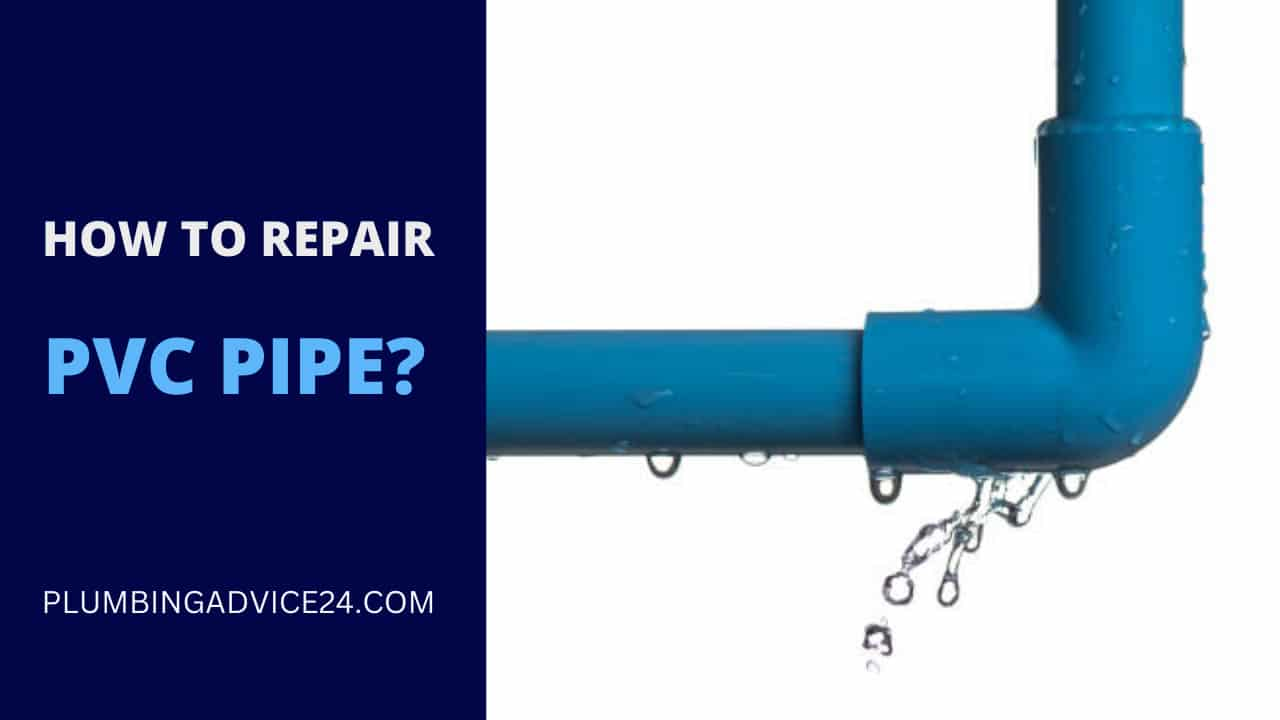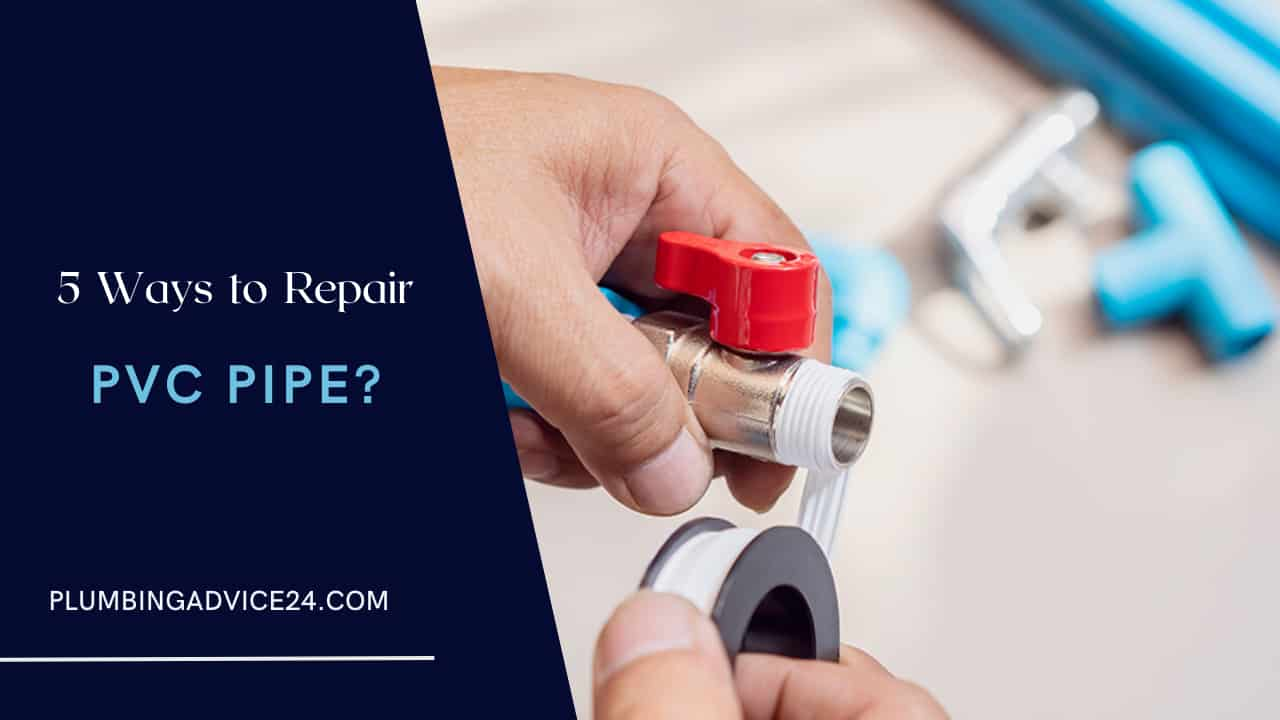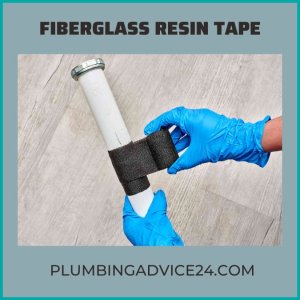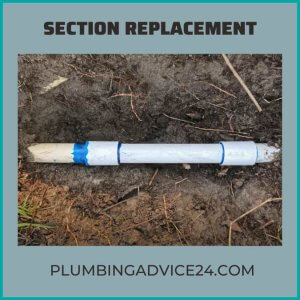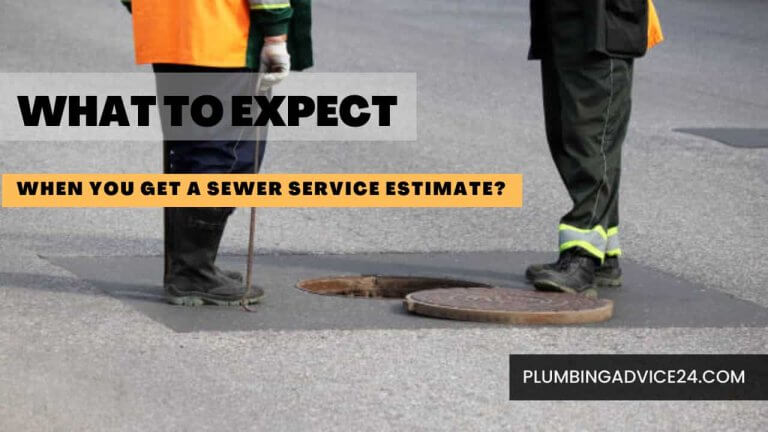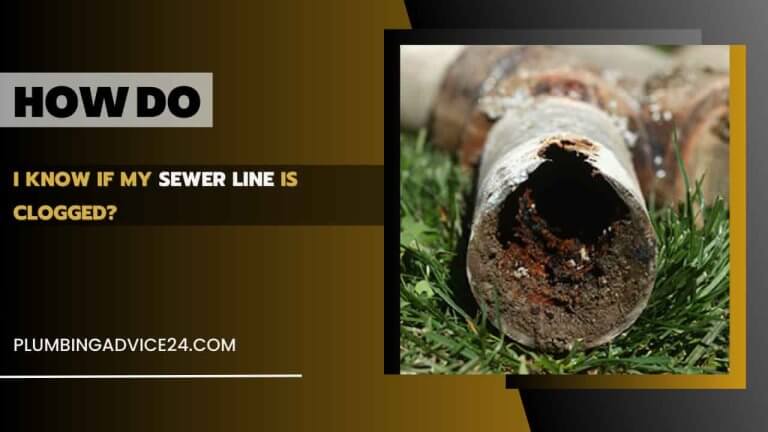How to Repair PVC Pipe | Replace PVC Pipe
Nowadays, PVC plumbing systems are commonly used in most homes, commercial buildings, and apartments. PVC pipes are strong and durable, but after a while, you may suffer from problems like PVC leaks or cracks in them. But you don’t have to worry. In this article, we will discuss PVC pipes repair, and how to replace PVC pipe.
How to Repair PVC Pipe?
PVC pipes are commonly used as water pipes and drain pipes. If you are working with a leaking PVC pipe, you can also repair it yourself at home. For damage to PVC pipes, you can usually make repairs to control leaks, but if the damage is greater, you may need to replace the pipes.
Often the damage is so extensive that you have to seek the help of a professional plumber. Here are some tips to help you repair or replace PVC pipes in your home. Here we have given you the solutions for repairing PVC pipe, for which you should read the article further.
The ways to repair PVC pipes are as follows.
- Epoxy
- Rubber and silicone repair tape
- Rubber and hose clamps
- Fiberglass wrap
- Replacement
From epoxy and rubber tape to hose clamps and fiberglass, you should read on to learn more about how to repair or replace your PVC pipe.
Must Read : How to Install PEX Pipe | How to Repair PEX Pipe | Kink Repair in PEX Pipe | Repair Pinhole Leak in PEX Pipe
1. Epoxy
Repair Epoxy is used to fill cracks in PVC pipes. It is also often used for PVC pipe joints and PVC pipe leaks. Repair epoxy comes in the form of putty or viscous liquid.
Consider the following steps to repair PVC pipe with PVC pipe repair epoxy.
- First of all, you have to stop the flow of water so that you can easily work on leaking pipes or pipe joints, which will also prevent your repairs from being tampered with. For which you check the water line coming in the pipe, search the shut-off valve, and close it.
- Where there are leaks or cracks, wipe the area with a dry cloth and let it dry so that the epoxy repair can easily stick.
- Then, mix the epoxy putty or liquid with the steps shown above the epoxy packet. The epoxy packet will be easily available from your nearest hardware store.
- Then apply this mixture to the pipe where there is a leak or crack and let it dry for 10 minutes.
- Wait for an hour for a good result of your pipe repair, and then turn on the water flow. If you still suspect a leak in the pipe, you can use more epoxy putty again.
2. Rubber Repair Tape and Silicone Repair Tape
Rubber repair tape and silicone repair tape are easy solutions if you are dealing with small leaks in PVC pipes. The tape comes in a roll form, which can be easily found at your nearest hardware store.
Consider the following steps for the use of rubber repair tape and silicone pipe repair tape.
- First, stop the flow of water, and where there is a leak, clean the pipe with a cloth and let it dry.
- Remove the rubber repair tape or silicone repair tape from the roll and wrap it directly over the pipe and wrap it over the leak or crack.
- To completely cover the leak, wrap the repair tape around the crack, wrapping extra tape over both the left and right sides.
- Since the repair tape fixes the leak using compression, make sure the repair tape is tightly wrapped before reusing the pipes. Once confirmed, you can turn on your water flow.
3. Rubber and Hose Clamps
Similar to rubber repair tape and silicone repair tape, this repair method uses compression for small leaks or cracks. For this repair method, you will need a rubber sheet and hose clamps which you can buy from your nearest hardware store.
Consider the following steps for PVC plastic pipe repair with rubber and hose clamp.
- First, stop the flow of water, and wipe the leaked or cracked area with a cloth.
- Cut a rubber patch larger than the crack from the rubber sheet and arrange it over the crack of the pipe. You can use a knife or scissors to cut the rubber sheet.
- Loosen the screws of the hose clamp and place the clamp on the pipe and rubber patch. Then tighten the hose clamp screw until the rubber is forcibly compressed.
- Check the repaired area by turning on the water flow.
4. Fiberglass Resin Tape
Fiberglass resin tape facilitates repair by water-activated resin. It hardens the surface of the pipe and slows down the loss of leaks.
Consider the following steps to repair PVC pipe from fiberglass pipe wrap.
- Stop the flow of water into the pipe, and use a clean cloth to clean the dirt and debris on the pipe.
- Wet the fiberglass cloth and wrap the damaged part tightly. Wrap up the extra space around the crack for good pipe repair.
- Allow 15 minutes for the active resin of fiberglass to dry so that it hardens.
- Turn on the water flow and check the pipe repair.
5. Replacement
All of the PVC pipe repairs you saw above are temporary solutions that you can do without cutting the PVC pipe. But if you have been looking for a solution for a long time, it is only to replace the PVC pipe or pipe fittings.
If you have experience working with PVC pipes, you can replace them yourself at home. If you’re still wondering how to replace a section of PVC pipe, you may need some handy tools. To replace a section of PVC pipe at home you may need PVC pipes, couplings, PVC fittings, PVC tubing cutter or ratchet cutter, solvent glue
Here we have given you the steps for PVC pipe Replacement.
- First of all, turn off your water flow; as you are going to replace the pipes, you should protect your property from water damage.
- Cut the crack of your PVC pipe one inch more from the left and right side with a ratchet cutter and remove the same piece of pipe.
- Compare this damaged piece of PVC pipe with the new pipe and cut a piece of the same size from the new PVC pipe.
- Apply PVC solvent or PVC cement on the outside of both cut ends of the damaged, cut PVC pipe.
- Take two PVC couplings and apply PVC solvent inside them and fit these couplings tightly on both ends of the damaged, cut PVC pipe.
- Apply PVC solvent cement on both sides of the newly cut PVC pipe piece on the outside and fit tightly between these two couplings.
- Your PVC replacement is done, but give it 15-20 minutes before using it again so that the solvent cement dries completely.
- Now you can use it, turn on your water flow and check for repairs.
How Many Types of PVC Pipe Leak Repair Tape?
There are three types of pvc pipe leak repair tape as follows:
- Rubber repair tape
- Silicone repair tape
- Fiberglass resin tape
How Many Forms Does Plastic Repair Epoxy Come In?
Plastic repair epoxy does come in two forms, as below:
- Epoxy putty
- liquid
What Tools Do You Need to Replace PVC Pipe?
You will usually need these tools to replace PVC pipes manually at home, such as PVC pipes, couplings, PVC fittings, ratchet cutter or hacksaw, PVC solvents, etc.
By What Other Name Is PVC Solvent Known?
PVC solvent is also known as PVC cement, PVC solvent cement, solvent cement, pvc primer, solvent weld, solvent weld glue, and solvent glue, which comes in liquid form and holds the PVC pipe fitting tightly.
If You Liked This Post? So Share It with Your Friends
Suggested Articles:
- Galvanized Pipe Problems and Their Solution | Alternatives to Replacing Galvanized Pipe
- What is Cast Iron Pipe | How to Repair Cast Iron Pipe | Cast Iron Pipe Replacement Cost
- How to Install Copper Pipes | How to Repair Copper Pipe
- How to Install Steel Pipe | How to Repair Steel Pipe | How to Replace a Steel Water Pipe
- How to Install Brass Pipe | Connect Pvc Pipe to Brass Pipe | Install Copper to Brass Threaded Connection | Repair Brass Pipes
